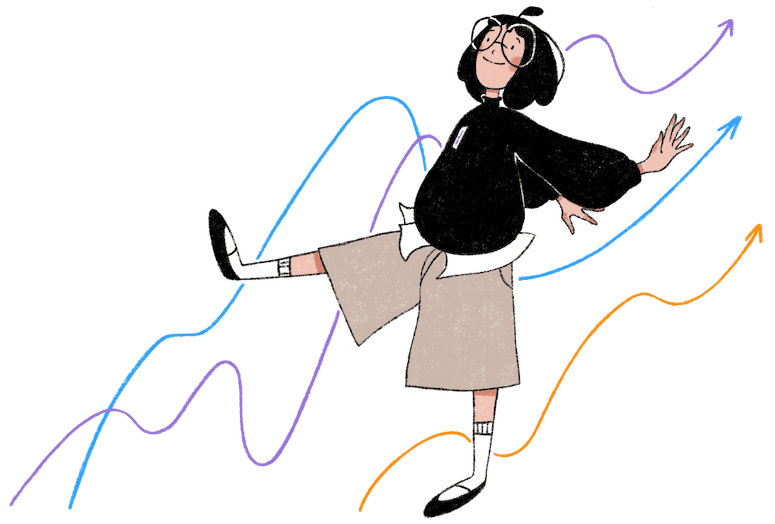What is Page Path and Screen Class in Google Analytics?
Think of navigating a website or app like following a trail. Each web page or app screen you visit is a step in that trail, leaving a path behind you.
The 'Page Path and Screen Class' dimension in Google Analytics tracks this trail, showing exactly which web pages or app screens users interact with.
It’s like having a detailed map of their journey, whether they’re on your website or mobile app.
What is Page Path and Screen Class?
The 'Page Path and Screen Class' dimension combines web and app tracking into a single analytical framework. Page Path refers to the part of a URL after the domain name that identifies a specific page.
For example, in 'www.example.com/products/shoes,' the page path is '/products/shoes.'
Screen Class, on the other hand, categorizes app screens by their function or purpose. For instance, 'HomeScreen' might represent the main app interface, while 'CheckoutScreen' refers to the screen where users complete purchases.
Together, these elements provide insight into user navigation across web and app platforms.
Why Page Path and Screen Class Matters
Understanding how users navigate your website or app is critical for improving their experience and achieving business goals. Here's why this dimension matters:
- Cross-Platform User Behavior: See how users interact with your brand across web pages and app screens, enabling a cohesive strategy for both.
- Identify Bottlenecks: Discover where users drop off or lose interest in their journey and optimize those pages or screens.
- Measure Page/Screen Performance: Evaluate engagement metrics to identify high-performing pages or screens that drive conversions, or low-performing ones that need improvement.
- Debugging and Troubleshooting: Diagnose problems like broken links, slow-loading pages, or app crashes by tracking user flows.
- Improve Navigation: Refine your site or app structure by understanding how users traverse your content hierarchy.
Where to Find It
To analyze 'Page Path and Screen Class' in Google Analytics 4:
1. Reports Section:
- Go to Reports > Engagement > Pages and Screens.
- This report displays the 'Page Path and Screen Class' dimension, paired with metrics such as views, engagement time, and conversions.
2. Explorations Section:
- Navigate to Explore > Freeform Analysis.
- Add 'Page Path and Screen Class' as a dimension and combine it with custom metrics like 'Engagement Rate' or 'Event Count' for deeper insights.
3. Filtering Data:
- Use filters to isolate specific user segments. For example, analyze only mobile traffic or filter by acquisition channels like organic search.
4. Custom Dimensions:
- Set up custom dimensions for more granular tracking, such as categorizing screen classes into user-defined groups like 'OnboardingScreens' or 'ShoppingScreens.'
Common Mistakes to Avoid
Avoid these common errors when analyzing 'Page Path and Screen Class':
1. Not Segmenting Data: Looking at overall data without breaking it down by device, user type, or traffic source can obscure important patterns.
2. Ignoring Exit Points: Failing to address high exit rates on specific pages or screens may lead to lost opportunities for improvement.
3. Misinterpreting Dynamic URLs: Overlooking the impact of dynamic URL parameters (e.g., '?id=123') can create messy and redundant data. Use grouping techniques like filters or regular expressions to clean up reports.
4. Focusing Only on Web or App: Ignoring app data when you have a mobile app (or vice versa) leaves gaps in understanding your user journey.
5. Relying Solely on Metrics Without Context: Metrics like bounce rate or engagement time can be misleading unless paired with user intent and content type.
Related Terms
Here are key related terms to 'Page Path and Screen Class':
- Landing Page: The first page a user visits during a session, crucial for understanding entry points.
- Exit Page: The last page or screen users visit before leaving your site or app.
- Pageviews: The total number of times a specific page is viewed, including repeat visits in a session.
- Event Count: The total number of specific actions users take on a page or screen, like clicks or downloads.
- User Flow: The path users take through your site or app, visualized as a sequence of pages or screens.
Frequently Asked Questions

Don't get stuck with Google Analytics. Try analytics you will actually enjoy using.
Free to start and while below 3000 page views per month. Then $14 monthly.

